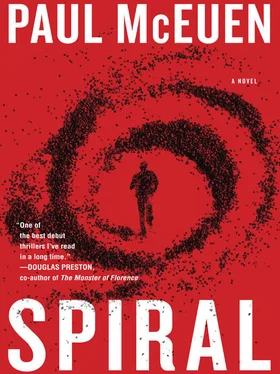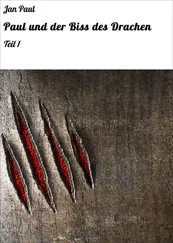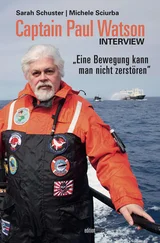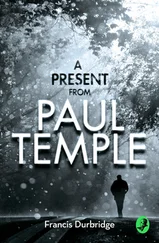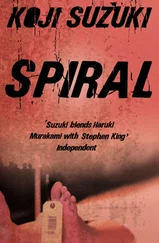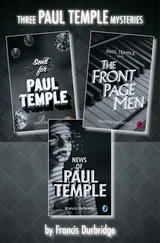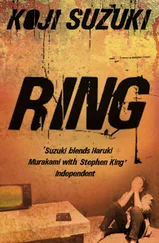CNN was showing footage of Bellevue. The reports ran on, a talking head, pretty and blond, with a little curl to her lips. “Can you get audio?”
“Sure.”
Her voice came on, too loud until Robbins turned it down: “… is denying that this is connected to a case earlier in the day of a crazed young Japanese man found in Times Square, but an unnamed source who is an employee at the hospital challenges this assertion. The Japanese man, who sources identify as an undergraduate at Columbia University named Hitoshi Kitano, was missing his right middle finger.…”
Kitano stiffened at the mention of his name. The other inmates looked toward him.
“Hey, that’s you!” someone said. “Kitano! Your name’s on the TV!”
Kitano stood, but he seemed shaky, holding on to the chair a moment, steadying himself. He watched the news piece to the end. Then he walked purposefully out of the room, the other prisoners parting before him.
“And that’s that,” Robbins said, and clicked them back to the live view of Kitano’s cell. “He came back to his cell, turned on his radio to a news site, sat down, and hasn’t moved since.”
Dunne kept thinking of a conversation with Kitano, almost ten years ago now. It was one of the most important conversations of Dunne’s life, before or since. The thirty-six-year-old foreign-policy wonk and the seventy-five-year-old billionaire were discussing the geopolitical consequences of biological weapons, drinking a very fine scotch, as was their custom. Both men believed that biological war was a near inevitability. The technology was moving so fast, sooner or later biological attacks could become commonplace between adversaries.
It was unlikely that Europe would ever attack America with such weapons, nor would Japan. The Soviets had a huge biological-weapons program, but they had the good grace to collapse.
The Chinese wouldn’t hesitate, both men agreed. Not if they felt threatened. Dunne believed the only way to avoid it was Pax Americana. To decapitate the Chinese Communist leadership and replace them with others woven into the U.S. tapestry.
But how? How could one derail the China juggernaut before it became unstoppable?
They’d danced around it for quite a while before Dunne finally said it: the Uzumaki.
With the Uzumaki, they both agreed, it would be straightforward, once the United States had developed a cure.
Although a decade had since passed, Dunne could remember the conversation word for word. “Where would you release it?” Kitano had asked.
“One option is Harbin. Like construction stirred it up. Or near one of the Chinese agriculture ministry’s biological research facilities south of there. Make it look like the incompetent fools were working on the Uzumaki, accidentally released it themselves.”
“Like the Soviet anthrax incident at Sverdlovsk in ’79?”
“Exactly.”
Together they’d sketched out how it would go from there. The Uzumaki spreads, the country is isolated. Every other nation, fearful of a pandemic, shuts off travel, closes down trade with China. The Communist Party’s hold on power was already tenuous, propped up by the twin sticks of nationalist pride and the promise of economic growth. Robbed of that prosperity and angry at a leadership impotent before the spreading horror, the people would riot, first in the countryside, then in the cities. The State Council would collapse within weeks, the country plunging into chaos. The stage would be set for a joint United States–Japanese force to step in and restore order, backed by a cure and a bayonet.
If the United States developed a cure, Kitano and Dunne speculated, it could bring down China anytime it wanted. The two men shared a secret bond, one that deepened as China continued to rise in power. The Uzumaki, the Japanese superweapon, might still change history. It was almost a game with them: two men planning the downfall of the most populous nation in the world.
But then Kitano changed the game.
The first report that something was amiss had come to Dunne from the CIA. A consortium of Central American and Asian agricultural investors had purchased ten thousand acres of Brazilian farmland about four hundred miles from where Toloff had discovered Fusarium spirale . On it they built a multimillion-dollar agricultural genetics research institute and agricultural experiment station called SunAgra. It was staffed with dozens of Ph.D.-level scientists with expertise ranging from crop science to fungal genetics, all living and working on-site. Their stated goal was to develop new strains of genetically modified maize for Far East markets. On the face of it, quite reasonable: corn had become a key crop throughout Asia. China was the number-two producer and consumer of corn in the world, and North Korea had become completely dependent on the crop under Kim Il-Sung. A little digging, however, turned up a number of alarming details. For one, scientists at the SunAgra Institute published no papers, wrote no grants, and filed few patents. Furthermore, one of the species they studied was a rare fungus known as Fusarium spirale , a strange choice, since it was unknown outside of a four-province area of Brazil and had no apparent relevance to the Far East markets. And most alarmingly, the investor group was largely a shell. More than ninety percent of the money behind the project came from a single Japanese investor, the billionaire Hitoshi Kitano.
Kitano was running his own private Uzumaki program.
DUNNE HAD NO CHOICE BUT TO TAKE ACTION. BUT HE WAS in a bind—Kitano could burn him. Much of the information Dunne had shared over the years during their China conversations was classified, putting him in violation of the State Secrets Protection Act. It was treason, sharing NOFORN classified information with a foreign national, not to mention plotting the overthrow of a foreign government. Such a thing could get you a very long prison term, possibly even a death sentence.
Dunne had provided Kitano with classified information, and in turn Kitano had shared insider information about certain publicly traded Japanese companies. Kitano could reveal this to federal prosecutors, how Dunne, while sipping Kitano’s expensive scotch, had indiscreetly shared sensitive state secrets and subsequently made a small personal fortune in the Asian stock markets.
Dunne had one thing in his favor. The U.S. government under no circumstances wanted to draw attention to the Uzumaki. The Japanese doomsday weapon was still unknown to all but a tightly held group in the security establishment. Toloff’s program at USDA was top secret, no foreigners. If word of it got out that the United States was tinkering around with a biological weapon of that magnitude, not to mention the connection to Unit 731 and the tests on Chinese civilians, Beijing would go ballistic.
But Dunne also knew that no organization as large as Kitano’s could stay entirely on the correct side of the law. He ordered some digging done, and the next time Kitano arrived in the United States, federal marshals arrested him for tax evasion. The trial was quick and antiseptic. Kitano remained silent throughout the trial, and never took the stand in his own defense.
Dunne had made sure of that. In a private meeting at Kitano’s estate before the trial, Dunne had threatened Kitano with the biggest weapon he had. “Tangle with me at your peril. We’ll disappear the Uzumaki program and then turn over everything on you to the Chinese Ministry of State Security: the records from Ishii, the photographs, the transcripts—anything and everything that implicates you in the torture and genocide of Chinese civilians. And after they’re good and worked up, we’ll turn you over to them for prosecution of war crimes.”
That had shut Kitano up. Neither man spoke for almost a minute. Finally Kitano had said, “You have no fear that I will tell the Chinese everything?”
Читать дальше
